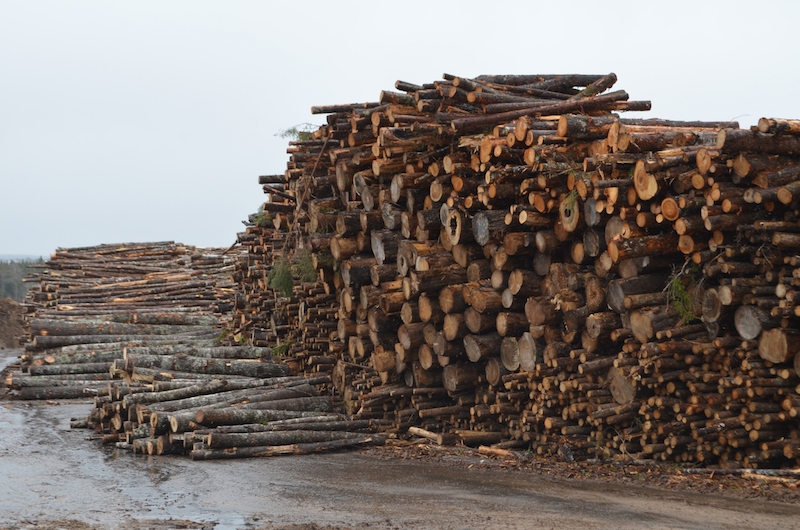
Bioheat blunders: Typical mistakes made by new wood heating projects
November 6, 2018
By Pat Liew
Nov. 6, 2018 - Over the past 10 years the development of biomass heating projects has increased significantly. The Northeast United States led the way, motivated by replacing fossil fuels with biomass in public buildings. Biomass Resource Energy Center (BERC) has been at the forefront of promoting the push towards biomass heating.

As in any new technology adoption, mistakes were bound to happen. Over the 10 years of biomass heating development in the North America, I witnessed many mistakes that often led to project failure. Here are some of the typical mistakes I see.
Cart before the horse
It is surprising how many projects do not go through a fuel supply due diligence process. Wood fuel is the largest variable cost of each biomass heating project. In some regions, wood fuel price and quality can often fluctuate significantly. Many biomass heating projects are built without concern for that fluctuation. This leads to some projects stopping operations for certain periods of time, and some to revert to heating oil or natural gas.
Very few to no bids
Many biomass heating project developers think that once a project is built, suppliers will come rushing through the door. This is certainly not my experience. I have seen projects where my company was the only bidder, or where there were no bidders at all. This is because sawmill owners and loggers typically do not spend much time online searching for RFPs and RFQs, especially in areas where biomass heating projects are rare. Successful projects directly source out all the potential wood fibre suppliers, notifying them about the bidding process.
Biomass terminology
Tree chip, paper chip, clean chip, fuel chip, bole wood chip – all those terms can all mean same or different things. Wood biomass terms are not standardized, and therefore the same terms can have different meanings in different regions. The best way to avoid mistakes in terminology is to visit supplier site and examine the fuel product before signing a contract. Otherwise, a biomass heating project runs a risk of contracting fuel that is not compatible with its equipment.
Technology adaptation
Biomass heating projects are more successful if the technology adapts to the market’s feedstock, and not the other way around. For example, a project in Northern Pennsylvania installed a boiler that accepted feedstock with moisture content (MC) lower than 15 per cent, based on what was available from a sawmill next door. However, that sawmill eventually shut down, and the biomass project could not find other suppliers in the woodshed that could supply material lower than 15 per cent MC. Prior to deciding on technology, each biomass heating project should clearly understand the type of wood fuel available in the market.
Fuel storage and disruption plans
Fuel storage capacity required by a biomass heating project to operate smoothly without fuel supply disruptions depends on a geographical region. Weather affects logging and trucking operations, so regions with heavy snowfall are prone to fuel supply disruptions, and therefore projects locating in those regions require larger storage capacity. Again, discussing these issues with suppliers directly is best way to understand how big fuel storage capacity should be to mitigate against fuel supply disruptions.
Weather is just one example of potential causes of fuel supply disruptions. Others include vendor default, equipment failure, and catastrophic event. A robust fuel supply disruption plan is necessary for each project to prevent surprises down the line. New biomass heating projects often lack such plans, leading to preventable shut downs. For example, biomass heating projects often rely on just one fuel vendor. If that vendor defaults, and there are no planned back-up vendors, then the project runs short of fuel. Having a good fuel supply disruption plan can easily prevent such situations.
Pre-construction miscommunication
One of the common mistakes in the pre-construction phase of a biomass heating project is miscommunication between the construction project manager and plant operations manager. The goal of the project manager is to ensure that construction is completed on time and under budget, while the goal of the operations manager is to ensure that there is little to no downtime. Because of this misalignment of objectives, miscommunication can cause problems down the line.
In one case, for example, the project manager purchased a cheap storage facility to stay under budget, not asking the operations manager for an opinion. Storage problems have caused significant downtime since the project became operational. Therefore, it is important for a project manager and the plant operations manager to engage in open communication to ensure the project is not compromised by, for example, potential budgetary savings.
There are many more potential mistakes that can happen when developing a biomass heating project. A comprehensive due diligence process is the only way to minimize the chance of potential failure. This is especially the case on the feedstock supply side of things. Fuel is an ongoing cost, therefore making sure that all potential issues are weeded out prior or during the construction will save the variable costs associated with running a biomass heating project in the long-term.
Pat Liew is the business development manager for Ecostrat Inc.
This article is part of the Bioheat Week 2023. Read more articles about bioheat in Canada.
Print this page